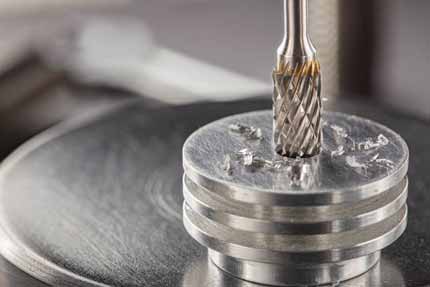When choosing end mills for your project, there are several things you need to consider. There are many different shapes and specifications. Knowing these will help you make the right choice for the job. You can use a standard end mill, or you can choose an uncommon shape. There are many benefits to choosing a specific shape and specification.
Angle-Nosed End Mills

When choosing the right Angle-nosed end mills for your specific application, you need to know which specific specification you need. You should consider the size, shape, and material you’re working with, as well as the feed speed and feed per revolution of the end mill. In addition, you’ll want to consider the type of finishing you need to achieve.
Ingersoll’s T-Carb end mills feature specialized engineering and design for high-speed machining. Their 6 flute design and eccentric relief provide maximum strength and superior chip control, while also delivering surprising finish results. Specifically, their Series 33 end mills feature the latest in engineering design for aggressive ramping, pocketing, and finishing operations.
Ball-nosed end mills
Ball-nosed end mills are rounded-tip milling tools used for various machining processes. They can be single or double-ended and come in both high-performance and general-purpose geometries. Depending on the application, ball-nosed end mills can be used for large corner radius grooving, contour milling, and profile milling. They are also commonly used for engraving and 3D tooling.
When choosing the right ball-nosed end mill, it is important to understand what you need it for. When choosing an end mill, make sure to consider the material to be cut and the surface finish you need. Typically, the ball-nosed end mill is better for high-detail contour work, which requires more passes than a fishtail or a regular end mill.
Bullnosed end mills
Bullnosed end mills are available in a wide range of sizes and shapes for a variety of applications. The material on which they’re made is a composite of tungsten carbide and cobalt, which is used as a binder to add strength and shatter-resistance. However, the quality and performance of the material depends on the grain size of the tungsten and cobalt particles. Generally, a 10% micro-grain carbide grade is enough for most applications.
Bullnosed end mills feature a small radius on the edge of the tool, which can lead to a better finish. They can also be less prone to chipping than roughing mills. Roughing mills, on the other hand, feature teeth with serrations that help break up chips and reduce chatter. The serrations also reduce chatter, or vibration, which is the result of the tool cutting into a material.
Compression end mills
If you are looking for an end mill that is suitable for working with laminates, you should consider a compression end mill. They offer the best cut finish on both the top and bottom surfaces of the work piece. However, you must ensure that you set up the CAM program properly. Below are some tips to help you choose the right compression end mill for your job.
First, know what type of cutting you need to perform. Different end mills have different shapes and specifications. The type of material you need to cut will affect the type of end mill you need. The surface finish you are looking for is also important.
Coated end mills
Coated end mills are a popular alternative to traditional end mills. These mills feature coatings that provide superior performance and extended tool life at higher temperatures. Unlike traditional carbide tooling, these coatings provide maximum abrasion and heat resistance. The coatings used on these tools can add up to 25% in cutting speed. They are also more expensive, but can provide longer tool life than other types of end mills.
Summary:
Coatings are available in many different types, and the choice is ultimately up to the user. A coating’s hardness, chemistry, and thickness are crucial factors in maximizing their performance. These coatings extend tool life, reduce build-up edges, and improve productivity.


